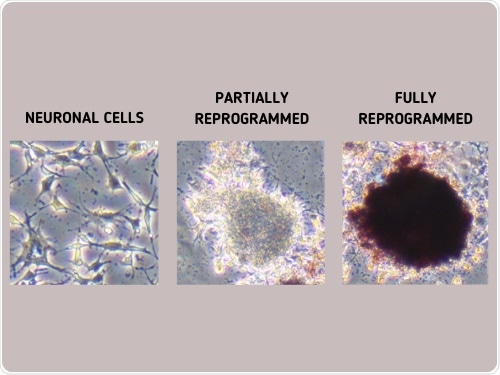The Nobel Prize-winning revelation in 2012 that ordinary cells might be induced to revert to their earliest pluripotent state heralded the start of the ethical stem cell era.

A group of scientists used “chemical fingerprint” data collected via non-invasive Raman spectroscopy to train an AI so it can monitor if the reprogramming of ordinary cells into stem cells is on track and check for markers that will verify a successful return to their earliest pluripotent stage. Image Credit: Hiroshima University.
Suddenly, researchers could have an endless supply of pluripotent stem cells—the most versatile of stem cells—that can transform into any sort of cell, quite similar to what embryonic stem cells do, but without the ethical issues that have impeded previous research.
Induced pluripotent stem cells, or iPS cells, are reprogrammed cells that have enormous potential in regenerative medicine, where they can be utilized to produce tissue or organ replacement-based treatments for life-threatening disorders.
However, getting regular cells to revert to pluripotency is a time-consuming and sensitive process. Getting iPS cells is a game of chance. Scientists can enhance their chances of obtaining viable iPS cells for therapeutic applications by learning everything they can about the complicated chemical changes that occur within during reprogramming.
Current approaches for tracking reprogramming status, on the other hand, rely on damaging and expensive processes. Raman spectroscopy, according to a study led by Dr Tomonobu Watanabe of Hiroshima University’s Research Institute for Radiation Biology and Medicine, could be a low-cost, easier, and non-intrusive tool for monitoring what happens inside the cell as it transitions.
The quality evaluation and sorting of existing cells have been carried out by investigating the presence or absence of expression of surface marker genes. However, since this method requires a fluorescent antibody, it is expensive and causes a problem of bringing the antibody into the cells.”
Dr Tomonobu Watanabe, Professor, Research Institute for Radiation Biology and Medicine, Hiroshima University
“Solution of these problems can accelerate the spread of safe and low-cost regenerative medicine using artificial tissues. Through our method, we provide a technique for evaluating and sorting the quality of iPS cells inexpensively and safely, based on scattering spectroscopy,” added Watanabe.
Raman spectroscopy avoids the use of invasive techniques such as dyes or labels to extract biological data. It instead uses vibration signatures created when light beams interact with chemical bonds in the cell. Scientists can use the vibration frequency of each chemical to determine the molecular composition of a cell.
This spectroscopic technique was utilized to obtain the “chemical fingerprints” of mouse embryonic stem cells, the neuronal cells they differentiated into, and the iPS cells derived from those neuronal cells.
These data were then utilized to train an AI model that can check if the reprogramming is going smoothly and validate the quality of the iPS cells by looking for a “fingerprint” match with the embryonic stem cell.
They used the “chemical fingerprint” of neuronal cells as the beginning point for transformation and the patterns of embryonic stem cells as the desired end goal to track progress. They used “fingerprint” samples taken on days 5, 10, and 20 of the neuronal cells’ reprogramming as reference points for how the process was progressing along the axis.
The results were published in the journal Analytical Chemistry in the October 2020 issue.
The Raman scattering spectrum contains comprehensive information on molecular vibrations, and the amount of information may be sufficient to define cells. If so, unlike gene profiling, it allows for a more expressive definition of cell function. We aim to study stem cells from a different perspective than traditional life sciences.”
Dr Tomonobu Watanabe, Professor, Research Institute for Radiation Biology and Medicine, Hiroshima University
Source:
Journal reference:
Germond, A., et al. (2021) Following Embryonic Stem Cells, Their Differentiated Progeny, and Cell-State Changes During iPS Reprogramming by Raman Spectroscopy. Analytical Chemistry. doi.org/10.1021/acs.analchem.0c01800.